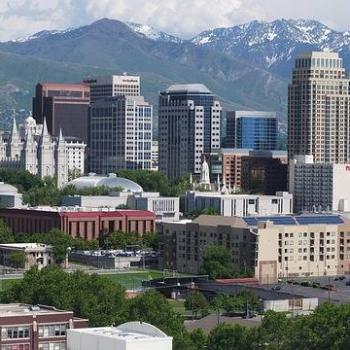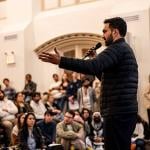JERRY (no locale listed) SENDS THIS:
We’ve been seeing a seismic shift in religion worldwide. It manifests differently for different religions and different countries. This includes a struggle for the soul of Islam, the secularization of Europe, struggles in Protestant groups, etc…. I’d love to see you try to make some sense of where we’re headed at the “forest” level rather than looking at the “trees.”
THE GUY ANSWERS:
This fitting New Year’s theme requires longer-than-usual response. Compare Jerry’s first words with this quote: “We are currently living through one of the transforming moments in the history of religion worldwide.” That sentence begins “The Next Christendom” (Oxford University Press, 3d edition, 2011) by Baylor University historian Philip Jenkins. He refers to the dramatic shift of global Christian momentum toward growing churches in Africa, Asia, and Latin America, including places rife with poverty, pestilence, and oppression.
Meanwhile, many churches are stagnant or declining in more affluent North America and especially (yes) secularized Europe. The “World in 2013” edition of Britain’s “Economist” magazine has a dour piece titled “Christianity at Bay” that emphasizes opposition to Christian tradition in the West, including gay marriage, with only passing mention of the church upsurge elsewhere.
The authoritative “forest” data on all faiths, nation by nation, come from the Center for the Study of Global Christianity at Gordon-Conwell Theological Seminary in Massachusetts. The center projects that trends in 2025 will basically continue the following patterns in religions’ shares of the worldwide population in 1900 as compared with 2000:
— During the century, Christians of all types together slipped just a bit, from 34.5 percent to 33 percent.
— All Muslims (inclluding groups spurned by orthodox Sunnis) expanded from 12 percent to nearly 20 percent.
— The non-religious population scored even bigger gains, from negligible numbers to 12.7 percent, more due to Communist tyranny than voluntary secularization.
— Hindus were up slightly, Buddhists down slightly.
— There were massive losses for ethnic and tribal traditions such as Chinese folk religions, animism, and shamanism, dropping collectively from 31 percent to just over 10 percent.
— The small Jewish population declined even more sharply.
(A new Pew Research Center survey reports a different but roughly comparable global percentage breakdown as of 2012.)
Statistics aside, some other generalizations:
Indeed, there’s a major “struggle for the soul of Islam.” It pits devout, relatively moderate traditionalists against politicized or violent salafis, jihadists, and binladenites with thin religious credentials but ample zeal and growing populist appeal. From the West’s viewpoint, Islamic culture appears handicapped by inability to accommodate modern political, intellectual, economic, and religious freedom, and by the movement that continually terrorizes the innocent in God’s name, fellow Muslims included. Consider on how many Fridays Muslim thugs have murdered worshippers at mosques (not to mention murders of Christians at church).
A thought experiment for Muslims and other Religion Q and A followers: Will future historians regard all of that the worst damage inflicted on the moral stature of a great religion since Europe’s Catholic and Protestant rulers cocluded the Thirty Years’ War in 1648? (The intra-Christian carnage in the cross-and-crown era was vastly exceeded by the death tolls under anti-Christian regimes in the 20th century.)
Turning to “forestry” within the United States:
— Christianity suffers from self-inflicted wounds. Seemingly unending sexual molestation scandals have undercut the standing of Catholic leadership. The homosexual issue and other biblical disputes profoundly divide Protestantism between conservative evangelicals, often portrayed as obscurantists or bigots, over against liberals, who seem adrift and uncertain about their heritage. Recent decades produced an unprecedented slide among relatively liberal churches and steady gains for the conservative Protestant congregations, which sometimes barely resemble the familiar churches of old as they strive to attract new members.
— Guilt by association with the above factors and lack of solid institutions somewhat weaken U.S. Islam’s effectiveness.
— Other immigrant faiths and home-grown creedal creations expand spiritual options but don’t broadly shape U.S. culture.
— Judaism faces a severe decline from secularism, sagging piety, and intermarriage.
U.S. religion over-all is threatened by alienation from the younger generation, by eroding respect, by challenges to the “free exercise of religion,” and by increasingly assertive secularism, cynicism, and atheism promoted by the media, lawyers, and academics.
Anything you’d like to add?












